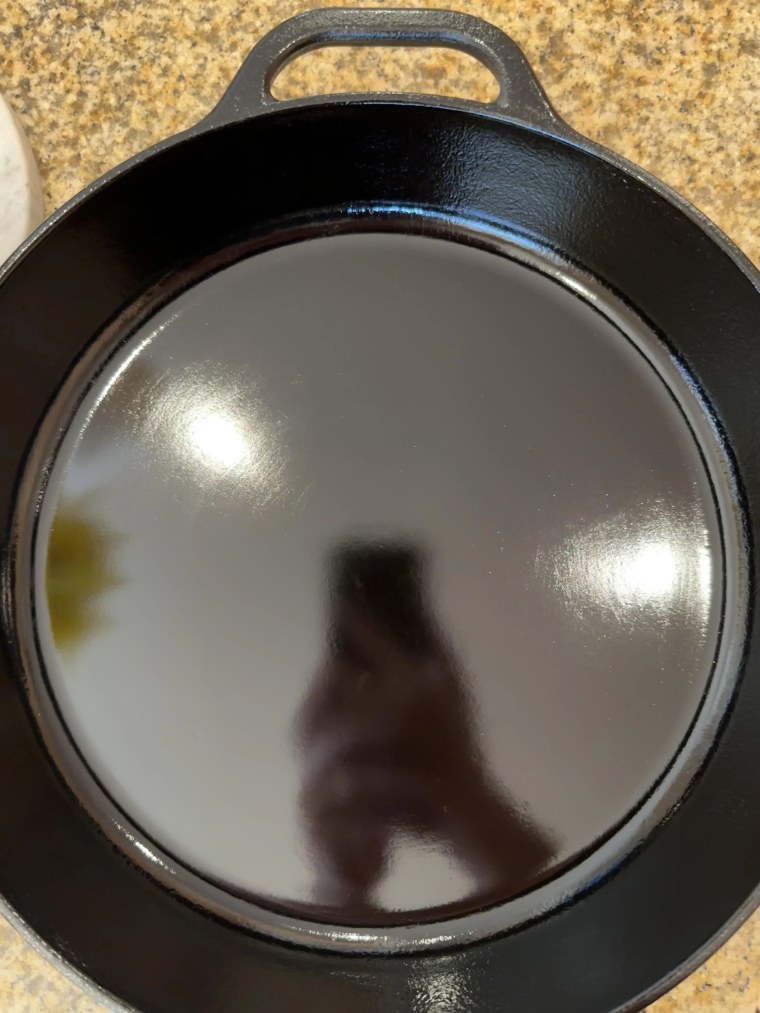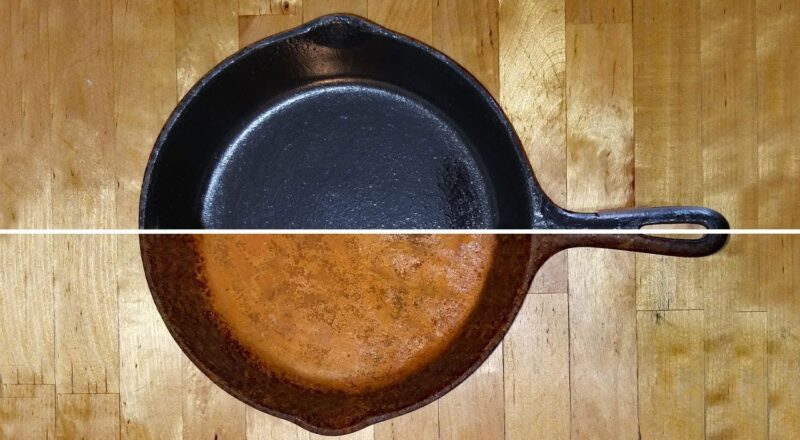Seasoning your cast iron skillet is a pivotal step in ensuring its longevity and optimal performance. For health-conscious individuals, knowing the right practices, such as what temp to season cast iron with avocado oil, can be both practical and rewarding. If you use a cast iron skillet frequently, you’ll be delighted by the results when it is well-seasoned. This article covers everything you need to know, from the benefits of using avocado oil to the step-by-step process and troubleshooting tips.
:max_bytes(150000):strip_icc()/How-to-Season-Cast-Iron-Skillet-3x2-1-bcd280f1703e47e0a59bb62e86a0d53a.png?keyword=what temp to season cast iron with avocado oil)
Why Use Avocado Oil for Seasoning?
Avocado oil is renowned for its high smoke point and numerous health benefits. Unlike conventional oils, avocado oil contains healthy fats and antioxidants, making it a better choice for those who are health-conscious. Moreover, this oil creates a durable, non-stick layer on the cast iron surface, perfect for daily cooking.
Health Benefits of Avocado Oil
Avocado oil is rich in monounsaturated fats, which are beneficial for heart health. It also contains vitamins E and K, and because of its anti-inflammatory properties, it may help reduce arthritis symptoms.

What Temperature is Ideal?
The primary question, what temp to season cast iron with avocado oil, needs a clear answer for effective seasoning. The optimal temperature to season cast iron with avocado oil is around 450F (232C). At this temperature, the oil reaches its smoke point and bonds well with the cast iron, creating a durable and non-stick surface.
Why 450F?
450F ensures that the avocado oil forms the right polymerized layer, which is essential for long-lasting seasoning. This temperature is high enough to achieve proper bonding, yet it won’t burn the oil.

Step-by-Step Guide to Seasoning Cast Iron with Avocado Oil
Let’s walk you through the process from start to finish.
Materials Needed
- Cast iron skillet
- Avocado oil
- Baking sheet
- Aluminum foil
- Lint-free cloth or paper towels
Preparation
- Clean your skillet thoroughly. Use warm water and a stiff brush.
- Dry it completely with a lint-free cloth. Moisture is the enemy of seasoning.
Applying the Oil
- Pour a small amount of avocado oil onto the skillet.
- Use a cloth to spread the oil evenly over the entire surface, including the handle and the bottom.
- Wipe off any excess oil to ensure only a thin layer remains.
Heating the Skillet
- Preheat your oven to 450F (232C).
- Line a baking sheet with aluminum foil and place it on the lower rack to catch any drips.
- Place the skillet upside down on the middle rack.
- Bake for 1 hour. This allows the oil to properly bond with the cast iron.
- Turn off the oven and let the skillet cool inside.
:max_bytes(150000):strip_icc()/How-to-Season-Cast-Iron-Skillet-3x2-1-bcd280f1703e47e0a59bb62e86a0d53a.png?keyword=what temp to season cast iron with avocado oil)
Maintaining Your Seasoned Cast Iron
To keep your cast iron in optimal condition, follow these maintenance tips.
Regular Cleaning
Always clean your skillet after each use with warm water and a stiff brush. Avoid using soap as it can strip away the seasoning.
Re-seasoning
If you notice the seasoning starting to wear off, repeat the seasoning process to maintain the non-stick layer.
Storing Your Cast Iron
Store your cast iron in a dry place with a layer of paper towels to absorb any moisture.
Common Mistakes and Troubleshooting
Seasoning cast iron can sometimes be tricky. Here are common mistakes to avoid and how to troubleshoot them.
Using Too Much Oil
Applying too much oil can cause it to pool and turn sticky, leaving behind a gummy residue. Always ensure only a thin layer of oil is used.
Uneven Heating
Make sure your oven is preheated and the heat is evenly distributed. Uneven heating can result in inconsistent seasoning.
Insufficient Cleaning
Any remaining food particles or moisture can hinder the seasoning process. Clean thoroughly and dry completely before applying oil.
Seasoning for Specific Cooking Needs
Cast iron skillets are versatile and can be seasoned to suit specific culinary needs. Here’s how to adjust your seasoning process based on what you often cook.
High-Heat Cooking
For high-heat cooking, you may need to season your skillet more frequently to maintain a robust non-stick layer.
Low-Heat Cooking
Low-heat cooking doesn’t wear away the seasoning as quickly, but you should still re-season every few months to keep the surface smooth and non-stick.
Acidic Dishes
If you often cook acidic dishes, such as tomato-based sauces, you might notice your seasoning wearing off quicker. Regularly maintaining the seasoning layer can prevent this.
Frequently Asked Questions
Is avocado oil the best option for seasoning cast iron?
Avocado oil is certainly one of the best options due to its high smoke point and health benefits. Other good options include flaxseed oil and grapeseed oil.
Can I use soap on my cast iron skillet?
It’s best to avoid soap as it can strip away the seasoning. Use warm water and a brush for cleaning.
How often should I re-season my cast iron skillet?
The frequency of re-seasoning depends on how often you use your skillet. A general rule of thumb is to re-season every few months or when you notice the non-stick layer wearing off.
Conclusion
Knowing what temp to season cast iron with avocado oil is crucial for maintaining a durable and non-stick surface. With these simple steps and tips, you’ll ensure your cast iron skillet remains in top shape, making every cooking experience delightful. Remember, the proper care and maintenance of your cast iron will not only enhance your cooking but also extend the life of your skillet. Don’t forget to check out more of our guides at reseason cast iron and cook pot roast.
For additional detailed steps, you can also visit Delish for more information.
As an Amazon Associate, I earn from qualifying purchases.

